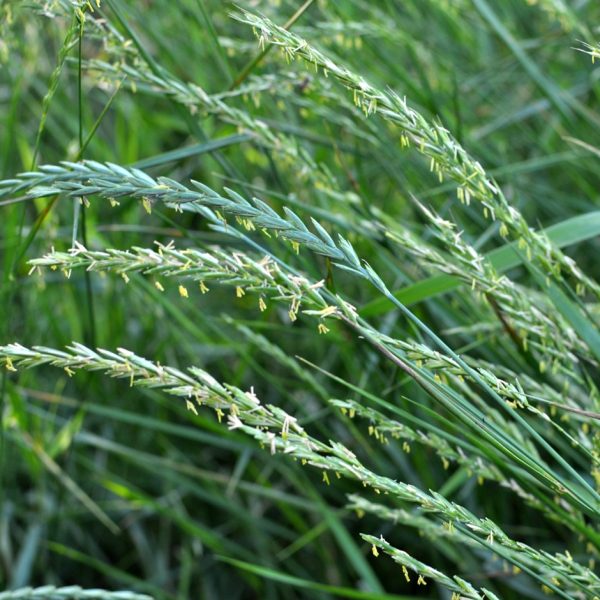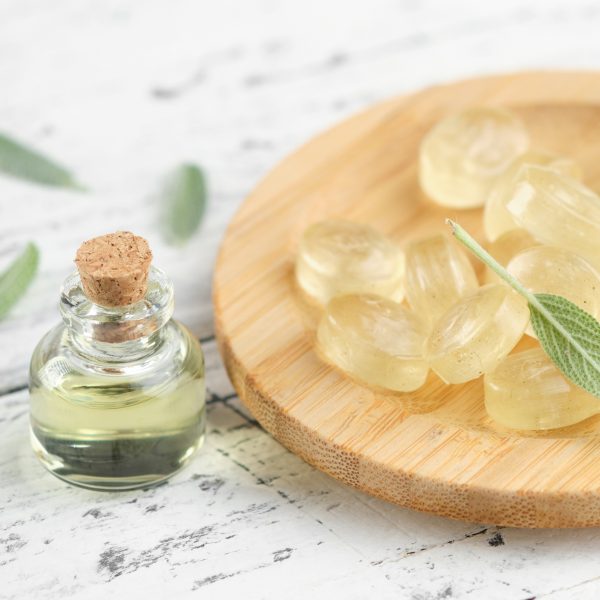
Growing herbal medicines is a very enriching practise, which supports our wellbeing in its own way. This article gives you top tips for when you are starting your medicinal herb garden.
Growing medicinal herbs is one of those rare things we can do in life that is truly wholesome and beneficial. It is good for the land, it is good for the birds and the bees, and it is good for our health and spirits. And the great thing is that for all that they give, they ask for relatively little in return. Most herbs are easy to grow and so long as you follow a few key principles, you can create a stunning herb garden in no time.
This article explores some of the main themes to think about when starting a medicinal herb garden for the first time. It is by no means a comprehensive guide but will hopefully give you some ideas to go away and explore in more detail.
Which herbs to grow?

With so many options to choose from, how do you choose which herbs to grow? A good starting point is to do some research into which herbs are best suited for the climate and growing space you have and to consider which herbs you may want or need in your life. Is your garden sunny or shady? Is there a specific condition you would like to treat? Or are there specific herbs you feel drawn to? You’ll normally find there are a few key herbs that are perfectly suited for both you and your garden.
It may be that you are someone who suffers from nervous tension and happen to have a shady garden – a perfect opportunity to grow skullcap, lemon balm and St. John’s wort. Or perhaps you have rich, loamy soil in a sunny garden and just want herbs that can be harvested for herbal teas, in which case you can’t go wrong with the likes of chamomile, fennel and catnip. Or do you just love bright colours and aren’t so bothered about its uses; if so, fill your garden and brighten your life with the oranges and yellows of calendula, California poppy and meadow arnica.
Make your herbs feel at home

It always helps to have some knowledge of a plant’s natural habitat and – where possible – to make those plants feel at home by mimicking or matching some of those conditions in your garden. Obviously, the easiest approach is to grow native plants that are already very much at home in our own climate. The likes of marshmallow and meadowsweet, for example, will cope just fine with the wettest and frostiest of British winters.
But if you are growing herbs such as lavender, thyme or sage, which are native to the Mediterranean, it helps to grow them in a warm, sheltered spot, and maybe even add some sand into your soil to improve drainage and prevent waterlogging. South-facing walls of a house can create remarkably warm micro-climates that can be perfect for sun-loving herbs.
Some herbs grow in very specific environments. Gentians, for example, are most commonly found growing in high mountain pastures. Obviously, it’s hard to replicate mountain conditions in an English garden, but you can mimic some of the mountain environment by creating a rock garden and growing your gentians somewhere that is shaded from the heat of the midday sun.
Similarly, there are quite a few woodlands herbs that naturally grow in the shade of trees in rich, loamy soil that is the result of many years of rotting autumn leaves. Goldenseal, Himalayan valerian and black cohosh are examples of herbs that thrive when they are grown in shaded areas with compost made from leaf litter.
How much space do the herbs need?
Herbs come in all shapes and sizes. From the tiny Lily of the Valley to the majestic 8 foot Angelica, your choice of herbs will always be influenced by the size of your growing area.
Allow each plant sufficient space to grow into and don’t forget that – if you have a small garden – you can use vertical space as well.
Codonopsis and passion flower are two beautiful climbers that can be trained up a trellis, and there are many shade-loving herbs, such as sweet woodruff and Tibetan gentian that can happily grow in their shade.
Understanding the life cycle of the plants

When choosing herbs to grow it helps to know the difference between annual, biennial and perennial plants. The majority of medicinal plants are perennial. In other words, they live for many years; their foliage usually dies back in the winter and grows back in the spring. Perennials can be slow growing and need plenty of care when they are young, but once established they require little maintenance other than occasional weeding, watering and cutting back.
Annual plants complete their life cycle in one growing season. They are reliant on seeds for their survival, and as a result they tend to be prolific self-seeders. So, although annual herbs such as German chamomile, calendula and California poppy only live for one season, they can easily be encouraged to return year after year simply by allowing the seeds to mature and fall onto the beds where they have grown.
Biennials are plants that take two growing seasons to complete their life cycle. Angelica, mullein and burdock are examples of biennial plants; they usually produce a rosette of leaves in the first year and flower in the second. Like the annuals, you’ll need to sow fresh seed every year if you want your favourite biennials to be in flower every summer.
Land preparation and medicinal properties

There are many ways to prepare land for growing medicinal plants – too many to cover here, but in essence the main principle is to encourage natural soil health through organic practices such as using a mulch or cover crop and adding compost where appropriate. The no-dig method, as taught by Charles Dowding, is a favourite of ours – partly because it doesn’t disturb the ecology of the soil, and also because it can significantly reduce the amount of time spent on weeding.
But before you order a trailer of rotted manure to pour over your lawn (a common no-dig practice), it is important to consider the effect of soil nutrition on the medicinal properties of the plants. Many of the healing compounds found in herbs are produced in response to environmental stress or external threats. For example, lavender grown at a high altitude in more nutrient depleted soil has higher levels of essential oils – most likely a result of having to tolerate greater solar-radiation and nutrient stress. So it’s not always best to grow herbs in rich, loamy soils as we would with our vegetables; plants that are grown in poor soils may be smaller in size but can produce much higher quality herbal medicines.
Interestingly, research has shown that herbs grown using organic practices (i.e. without artificial fertilisers), contain higher levels of secondary plant phytonutrients such as the protective polyphenols and flavonoids. The same applies to herbs grown in wild settings. So when it comes to preparing your land, sometimes less is more.
Propagation

Once you’ve chosen your herbs and prepared your land, it is time to introduce the plants. Essentially, you have three main options; you can start by sowing seed, you can take cuttings from existing plants, or you can buy new plants (either potted of bareroot).
There is something very satisfying about raising plants from seed; it helps create a stronger relationship with the plants that can add another layer of potency if and when you use them to prepare herbal medicines. Looking after your seedlings requires patience and care, and most herb growers will agree that the more you give to the plants, the more you receive in return.
There are of course some disadvantages when growing from seed; not everyone has suitable indoor growing space, and it takes longer to reach maturity. Many perennial herbs, such as echinacea, wild bergamot and St John’s wort, will only start to produce flowers in their second year. So, if you prefer not to wait that long and are willing to spend more money, then buying mature plants may be the best solution.
Keeping your plants in good health

Having raised your seedlings or purchased your plants and planted them in a suitable location in your garden, ensuring that tender plants are protected from late frosts, all you really need to do is keep on the top of the weeds, water them when needed, and protect them from potential pests.
Most herbs are quite resilient and suffer few problems with pests and diseases, but there are a few potential issues to keep an eye on. Seeds waiting to germinate can be a tasty snack for birds and mice; young seedlings can be susceptible to slugs and aphids; and herbs of all sizes can attract hungry rabbits and deer. Protecting the plants with some kind of physical barrier (traps, mesh cages or fencing) is an effective way to keep larger creatures away. And there are many organic practices for dealing with smaller critters; aphids, for example, can easily be controlled by releasing ladybird or lacewing larvae – both available from Dragonflii.
If you do experience repeated issues from certain pests, you can normally find herbs that are resistant to the pest in question. For example, slugs appear to have no interest in valerian, licorice mint and sweet woodruff. And both deer and rabbits have no interest in lovage, thyme or mullein.
But if you are growing mullein, keep an eye out for the brightly coloured ‘mullein moth caterpillars’, which – as the name suggests – are big fans of the mullein’s soft, juicy leaves. Left to their own devices they can decimate a plant in no time.
When to harvest
The interval between sowing and harvest can vary enormously. Annuals, by their very nature, are quick to grow and can only be harvested in the first year. German chamomile, for example, starts producing flowers in less than 3 months from sowing. But some perennials take a lot longer; Panax ginseng, for example, should be grown for 6 years before its roots are ready for harvest.
The harvest time and frequency will of course depend on the part of the plant that is harvested. Leaves, flowers and seeds can be harvested repeatedly without any serious detriment to the plant; harvesting roots on the other hand is less sustainable, usually requiring the whole plant to be uprooted and new plants grown in its place. That said, it is possible, for example, to dig around the base of a marshmallow plant to harvest some of the surface roots without killing the plant. And if you only have a few precious echinacea plants, you don’t need to use the roots – their seeds are also packed with the same immune-boosting tingly alkylamides, and when ground up into a powder make a surprisingly delicious tea.
Once harvested, there are many ways to process them into different herbal preparations, but this is a big topic – one that we will look at in more detail later in the year as it is a special skill to harness all the healing vitality of the herbs.
Until then, happy growing!
































